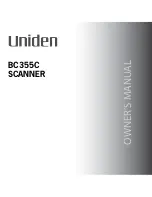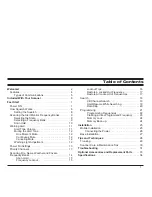
Page 12
4.3.4 CAN Data Rate.
The data delivery rate is selected from the setup program, and the following values are available
(Hz) – 1, 2, 5, 10, 25, 50, 100, 312, 500, 625, 750, 1000. Although the system endeavours to deliver
the rate with maximum accuracy, ultimate responsibility for data timing lies with the user’s host
system.
Care should be taken in selection of delivery rate, as it is possible to select unfeasibly fast data
delivery for a particular bus baudrate, resulting in data loss. Similarly since the scanners are
addressed at a fixed channel rate of 20kHz (Gen1) or 50kHz (Gen2), requesting a data delivery of
more than 20k/No. Channels or 50k/No. channels - ie 312Hz for a 64 channel Gen1 scanner -
wastes resources and in some cases can cause the microDAQ to hang, requiring a power cycle.
4.3.5 Control Via CAN.
The user command set is supported over the microDAQ’s CAN channel. The specification and
function of the commands are detailed in section 2 above, however the CAN implementation is as
follows.
The incoming message number is selected by the user from the front end software, though is
constrained to be relative to the outgoing data base message identifier. The offset from the base
identifier may be selected as being +0x10, +0x20, +0x30, +0x40 or +0x50. For example the base
data message identifier of 0x220 might be set up to receive commands over CAN on message
0x230 (0x220 + 0x10).
In addition to the incoming message offset, the user may select whether the incoming command is
acknowledged or not. The user command is a delimited 5 byte message that includes a block
parity check, as shown in Figure 4.5. If the command is received without detected error, and the
acknowledge option has been selected, MicroDAQ will respond to a user command with a positive
acknowledge byte (‘*’ or ASCII 42). Alternatively, if the command is received incorrectly it will
respond with the negative acknowlege byte (‘!’ or ASCII 33). The acknowledgement is sent as a
single byte message with identifier one greater than the receiving message. For the above
example, the acknowledge will be sent on message 0x231.
Data Byte
Content
4
<
(ASCII 60)
3
Parity
2
Parameter
1
Command
0
>
(ASCII 62)
Figure 4.5, Data Structure of the CAN Incoming Control Message.
4.4 Internal RAM.
4.4.1 Overview.
Data acquisition to internal RAM allows for fast acquisition without the potentially limiting factor of
external comms hardware (e.g. network hubs, PC CAN interfaces, etc.). Data can be acquired at
whatever speed is necessary and then dumped to the host PC as a post-acqusition task.



































